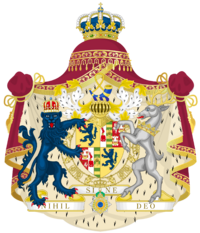Mascyllary people: Difference between revisions
m (1 revision imported) |
No edit summary |
||
| Line 1: | Line 1: | ||
{{Infobox ethnic group | {{Infobox ethnic group | ||
|group = Mascyllary | |group = Mascyllary<br><small>''Maskillier''</small> | ||
|image = | |image = | ||
|caption= | |caption= | ||
|poptime = | |poptime = 42,392,600 (2020) | ||
|langs = {{wp|German language| | |langs = Primarly {{wp|German language|Hesurian}} <small>(and other Hesurianic languages)</small> | ||
|rels = Mostly [[Cathartic Ditanery|Cathartic Ditanist]]<br><small>(various Ditanist denominations)</small><br>[[Disitru]]<br>{{wp|Irreligion|Irreligious}} | |||
|popplace= | |popplace= c. 42–50 million worldwide | ||
|region1 = {{flag|Mascylla}} | |region1 = {{flag|Mascylla}} | ||
|region2 = {{flag| | |region2 = {{flag|Krumlau}} | ||
|region3 = {{flag| | |region3 = {{flag|Finstria}} | ||
|pop1 = | |region4 = {{flag|Lilienburg}} | ||
|pop2 = | |pop1 = 32,946,813 (2017) | ||
|pop3 = | |pop2 = 780,000 (2018) | ||
|pop3 = 435,500 (2019) | |||
|pop4 = 13,965 (2018) | |||
}} | }} | ||
The '''Mascyllary people''' or '''Mascyllary''' ( | The '''Mascyllary people''' or '''Mascyllary''' ({{wp|German language|Hesurian}}: ''Maskillier'') are an {{wp|German people|Hesurian}} {{wp|ethnic group}} native to northern [[Erdara]], who all share linguistic relations through speaking the {{wp|German language|Hesurian language}}, but partially also their decendants and biological relatives. Mascyllary are the {{wp|titular nation}} of the [[Crowned Republic of Mascylla]], its political predecessors and before that the [[Mascyllary Kingdom]]. Legally, all persons with Mascyllary nationality or citizenship are politically "Mascyllary". | ||
The ethnic group is geographically centered around the northern Erdara region, encompassing 32 million people in [[Mascylla]]. An additional 1.3 million Mascyllary live in [[Krumlau]], [[Finstria]] and [[Lilienburg]] together; it is estimated that another 15 million people live in [[Cardia|Cardish]] and [[Hallania|Hallanic]], though the number is considerably variable due to the criteria used to distinguish between Mascyllary of partial or direct ancestry or native speakers. Though Mascyllary are internationally recognized as an ethnic group, it is difficult to define the group as it shares the same languages with other such as the Finstrians or Krumlovians who however subscribe to being ethnically different; this has evoked ethnologists to suggest an "Hesurian ethnic group" uniting all its native speakers and ethnicities, though this model has not received much attention. | |||
[[Category:Mascylla]] | [[Category:Mascylla]] | ||
{{Template:Mascyllatopics}} | {{Template:Mascyllatopics}} | ||
Revision as of 18:11, 14 May 2020
| Regions with significant populations | |
|---|---|
| c. 42–50 million worldwide | |
| 32,946,813 (2017) | |
| 780,000 (2018) | |
| 435,500 (2019) | |
| 13,965 (2018) | |
| Languages | |
| Primarly Hesurian (and other Hesurianic languages) | |
| Religion | |
| Mostly Cathartic Ditanist (various Ditanist denominations) Disitru Irreligious | |
The Mascyllary people or Mascyllary (Hesurian: Maskillier) are an Hesurian ethnic group native to northern Erdara, who all share linguistic relations through speaking the Hesurian language, but partially also their decendants and biological relatives. Mascyllary are the titular nation of the Crowned Republic of Mascylla, its political predecessors and before that the Mascyllary Kingdom. Legally, all persons with Mascyllary nationality or citizenship are politically "Mascyllary".
The ethnic group is geographically centered around the northern Erdara region, encompassing 32 million people in Mascylla. An additional 1.3 million Mascyllary live in Krumlau, Finstria and Lilienburg together; it is estimated that another 15 million people live in Cardish and Hallanic, though the number is considerably variable due to the criteria used to distinguish between Mascyllary of partial or direct ancestry or native speakers. Though Mascyllary are internationally recognized as an ethnic group, it is difficult to define the group as it shares the same languages with other such as the Finstrians or Krumlovians who however subscribe to being ethnically different; this has evoked ethnologists to suggest an "Hesurian ethnic group" uniting all its native speakers and ethnicities, though this model has not received much attention.
